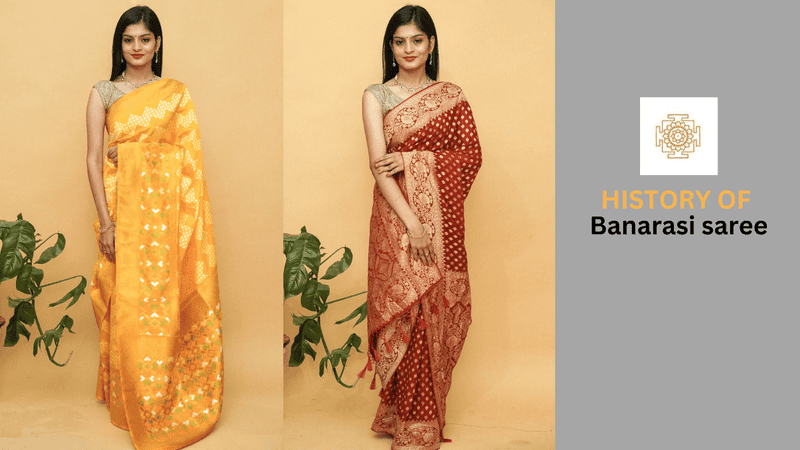The history of weaving in Banaras is not completely clear. Buddhist records suggest that Varanasi was a significant center for cotton weaving, while other sources mention the production of Hiranya fabric, made of gold, similar to the Kinkhab brocades of Banaras. The city is also mentioned in the Mahabharata, and British records indicate that Banaras was an important weaving center whose brocades were even exported to Europe. While early brocades
featured Rajasthani and Hindu motifs, these designs disappeared around the 16th century. Banaras developed into a silk weaving industry in the 17th century, brought to the city by Muslim weavers from Gujarat. The Benarasi weave we see today is influenced by Persian, Mogul, and Central Asian styles, and features motifs like buttis, paisley, jhallar, bel, and Shikargah. Banarasi handloom textile weaving is now one of the largest cottage industries in India, spread across various cities and towns in Uttar Pradesh.
Over time, the Banarasi saree evolved and began to incorporate elements of other cultures and regions. For example, during the 18th and 19th centuries, the British colonial rule in India had an impact on the Banarasi sarees. The British preferred lighter fabrics and simpler designs, which led to the creation of lighter weight Banarasi sarees with more subdued designs.
In recent years, Banarasi sarees are still highly prized and are considered one of the most luxurious and expensive types of sarees in India.
Eight Forms Of Banarasi Sarees
Banarasi sarees come in a variety of styles, each with distinctive qualities and weaving methods. These are some popular Banarasi saree designs:
● Katan Banarasi Saree – made of pure silk without any mixture of other fibers, this saree is known for its fine texture and durability.
● Organza Banarasi Saree – made of silk and organza, this saree has a sheer, lightweight texture and is often embellished with intricate designs.
● Georgette Banarasi Saree – made of silk and georgette fabric, this saree is known for its elegant drape and flowy texture.
● Shattir Banarasi Saree – made of silk and cotton, this saree has a slightly rough texture and is often used for making everyday wear sarees.
● Tanchoi Banarasi Saree – known for its unique weaving technique, this saree is made of silk and has a satin-like finish with small buti designs.
● Cutwork Banarasi Saree – featuring intricate cutwork designs, this saree is made of silk and often has gold and silver threadwork.
● Jangla Banarasi Saree – known for its floral and vine designs, this saree is made of silk and often has zari work and metallic embroidery.
● Tissue Banarasi Saree – made of silk and golden thread, this saree has a sheer, lightweight texture and a luxurious sheen.
In recent years, Banarasi sarees have also become popular in the international fashion scene. Many designers have incorporated elements of Banarasi weaving into their collections, and the sarees have been worn by celebrities and fashion icons around the world.

